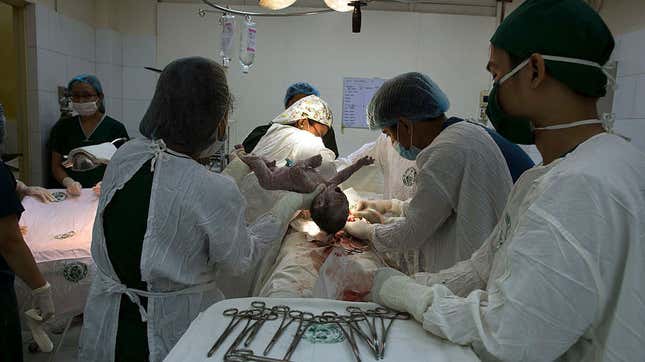C-Section Stigma Is Contributing to Maternal Mortality
Latest

While the rate of C-sections occurring across the world is increasing (a 2018 study found that they’ve increased from 6 percent of all births to 21 percent since 1990), in Nigeria women frequently decline the procedure because it’s often stigmatized. C-sections are often judged in opposition to “natural” vaginal births, but in Nigeria women face the added element of religious stigma in which vaginal delivery is tied to one’s womanhood and strength of religious faith.
The BBC reports that Nigeria has the world’s fourth-highest maternal mortality rate. In part, that’s because there’s one doctor for every 6,000 people and high costs can keep women from giving birth in hospitals. But also a low Caesarean birth rate, at just 2%, means that women who for medical safety should deliver via C-section are instead giving birth vaginally. (The World Health Organization says that a country’s Caesarean birth rate shouldn’t fall below 5%.)
One of the reasons the C-section rate is so low in Nigeria is because of the strong but common stigma associated with the surgery, in which it’s seen as inferior to giving birth vaginally. A Nigerian non-profit called Mamalette assigns mentors with women giving birth to promote preventative care and the information about c-sections hospitals lack, in the hopes that women don’t refuse to have them when they’re medically necessary.
But the maternal mortality rate is ultimately on the hospitals, not on these individual women. Problems with hemorrhaging and anesthesia can increase fatal C-sections in sub-Saharan Africa countries and 58% of births in rural Nigeria are delivered by unskilled attendants, the BBC reports.